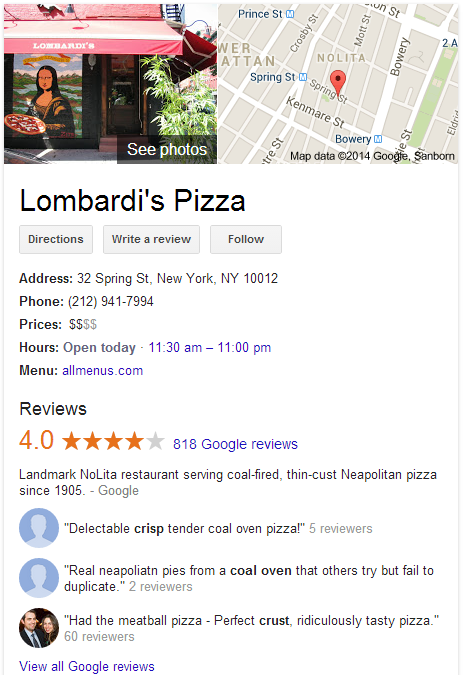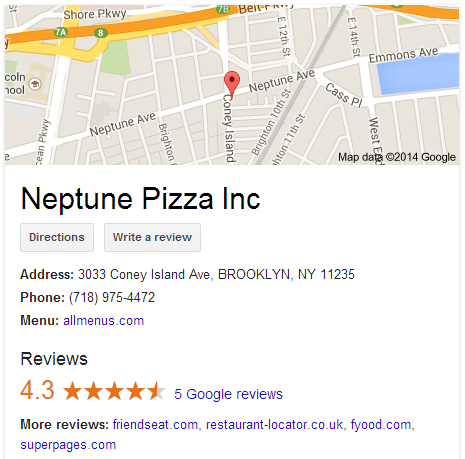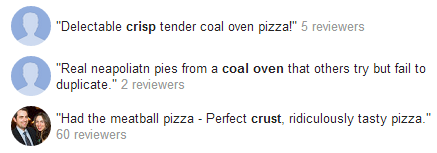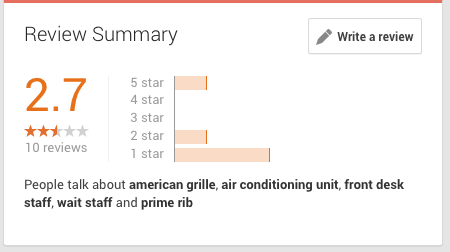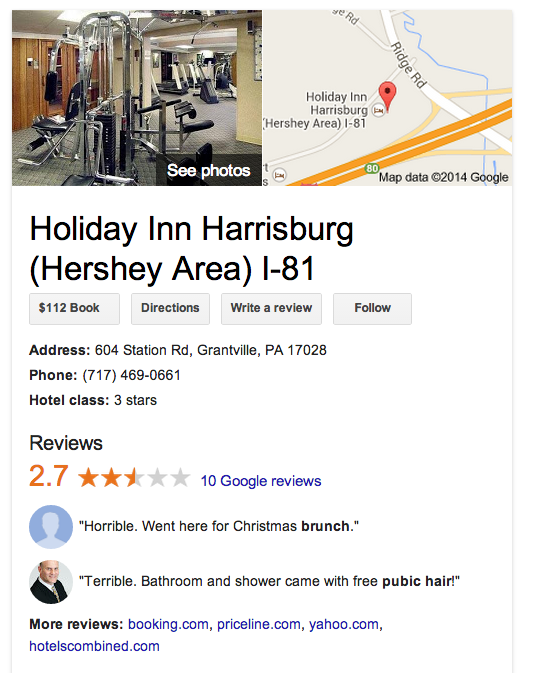If you’ve searched for a local business at all lately, you might have noticed that Google’s knowledge graph now displays snippets from Google+ reviews, like this:
Needless to say, as long as the reviews are positive, this can be incredibly helpful for local businesses. By giving searchers an easy at-a-glance summary of how consumers feel about a place, this change can help build trust with potential customers very quickly.
Unfortunately, not all local businesses are getting these snippets:
So why do some results show snippets when others don’t?
There are several factors at play here, but while we can never be 100 percent sure how the algorithm is making these decisions, we can make a few reasonable guesses.
What’s Up With the Bolded Words?
Let’s take a closer look at those review snippets:
As you can see, Google is bolding some of the words from each review. While there may be exceptions, every single one of the panels I’ve seen so far has done this.
You’ll also notice that next to each of these review snippets is a number that tells us how many other reviewers said something similar.
What the knowledge graphic is really saying here is that 5 other reviews used the word “crisp” in their descriptions. Two others used the words “coal oven,” and 60 other reviews used the word “crust.” This is a replacement for this previous incarnation of review analysis:
Presumably, some Google employee realized that this random list of words from Google reviews wasn’t especially helpful for searchers, so they replaced it with snippets.
So here’s the important thing to point out. Whenever these snippets show up, their always seems to be at least one bolded word. It looks like Google is typically only willing to show a review snippet if it can show you a bolded word.
And that means, most of the time, that at least two reviewers need to use the same word in order for a snippet to show up.
But, as you might have guessed, it’s a bit more complicated than that.
Take this horrific example, shared from Mike Blumenthal’s blog:
Evidently, Google occasionally uses other criteria to decide whether or not a word should get bolded. Perhaps “pubic hair” got bolded because it’s preceded by the word “free?” Whatever the reason, it’s clear that there’s some kind of semantic algorithm at work.
However that algorithm works, it’s apparent that if Google can’t bold a word, it’s not going to show a snippet.
In any case, the obvious solution is to get more reviews. The more reviews you have, the more likely they are to contain the necessary verbiage Google needs in order to show a snippet.
20,264 total views, 6 views today

